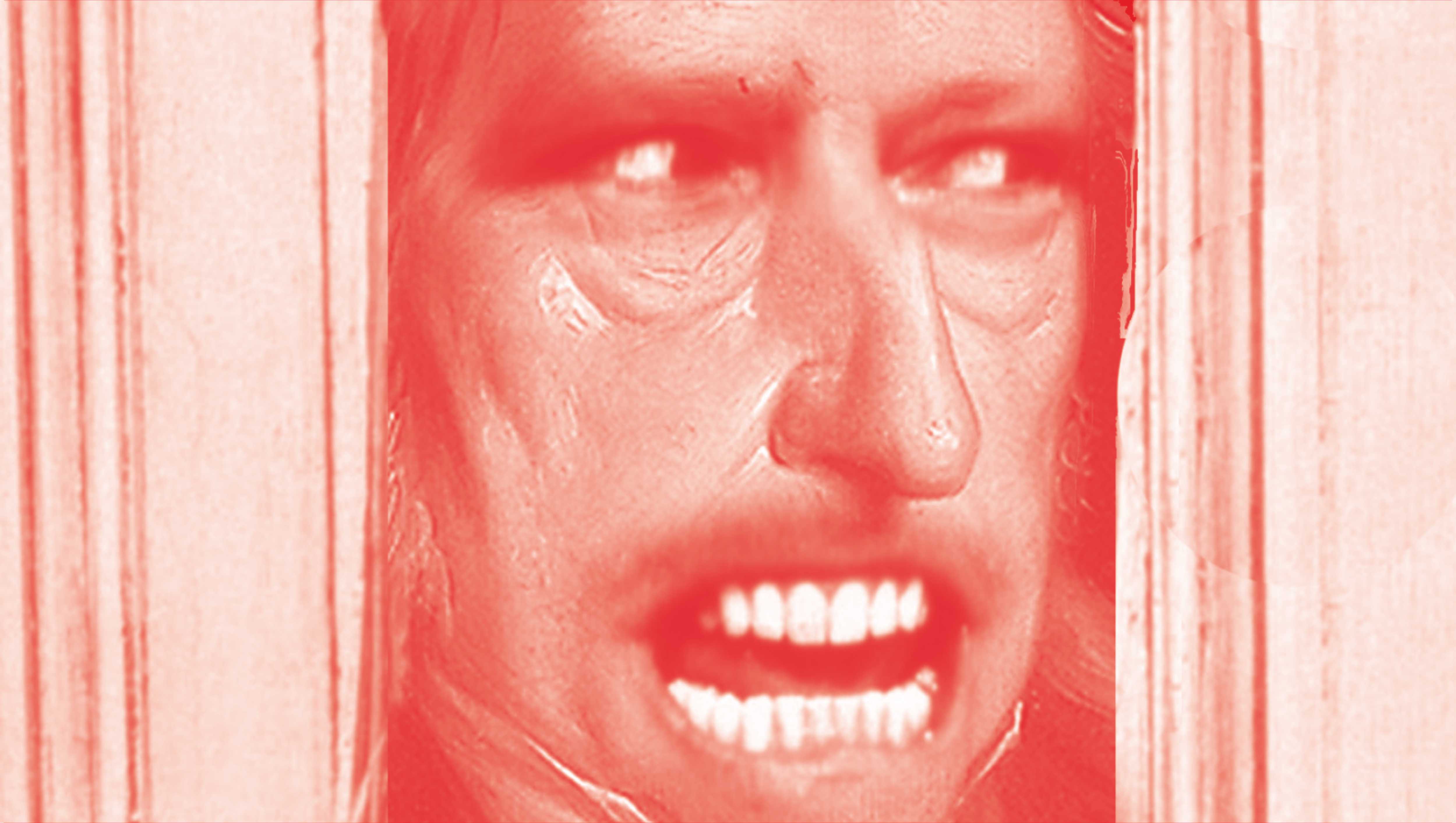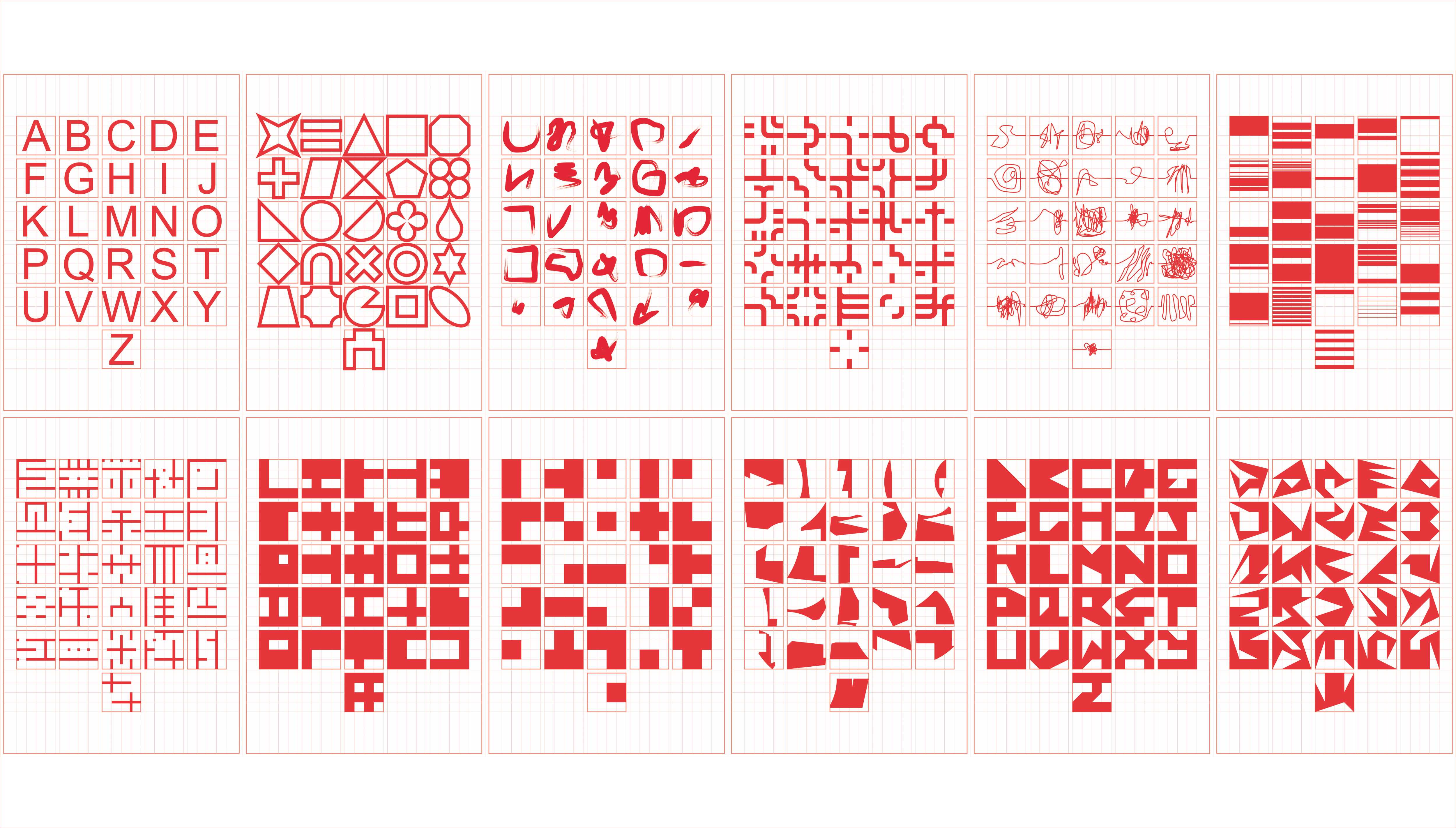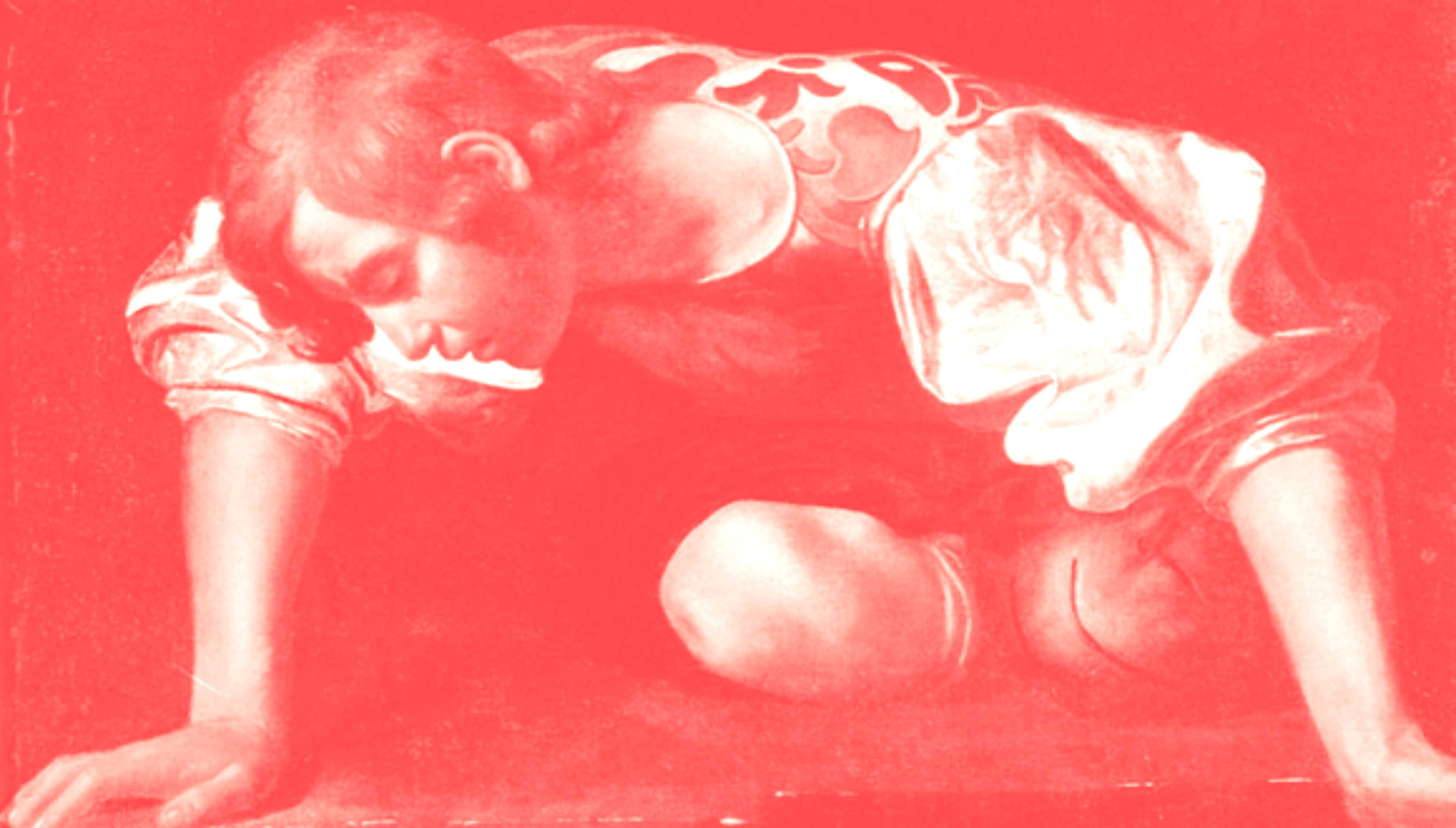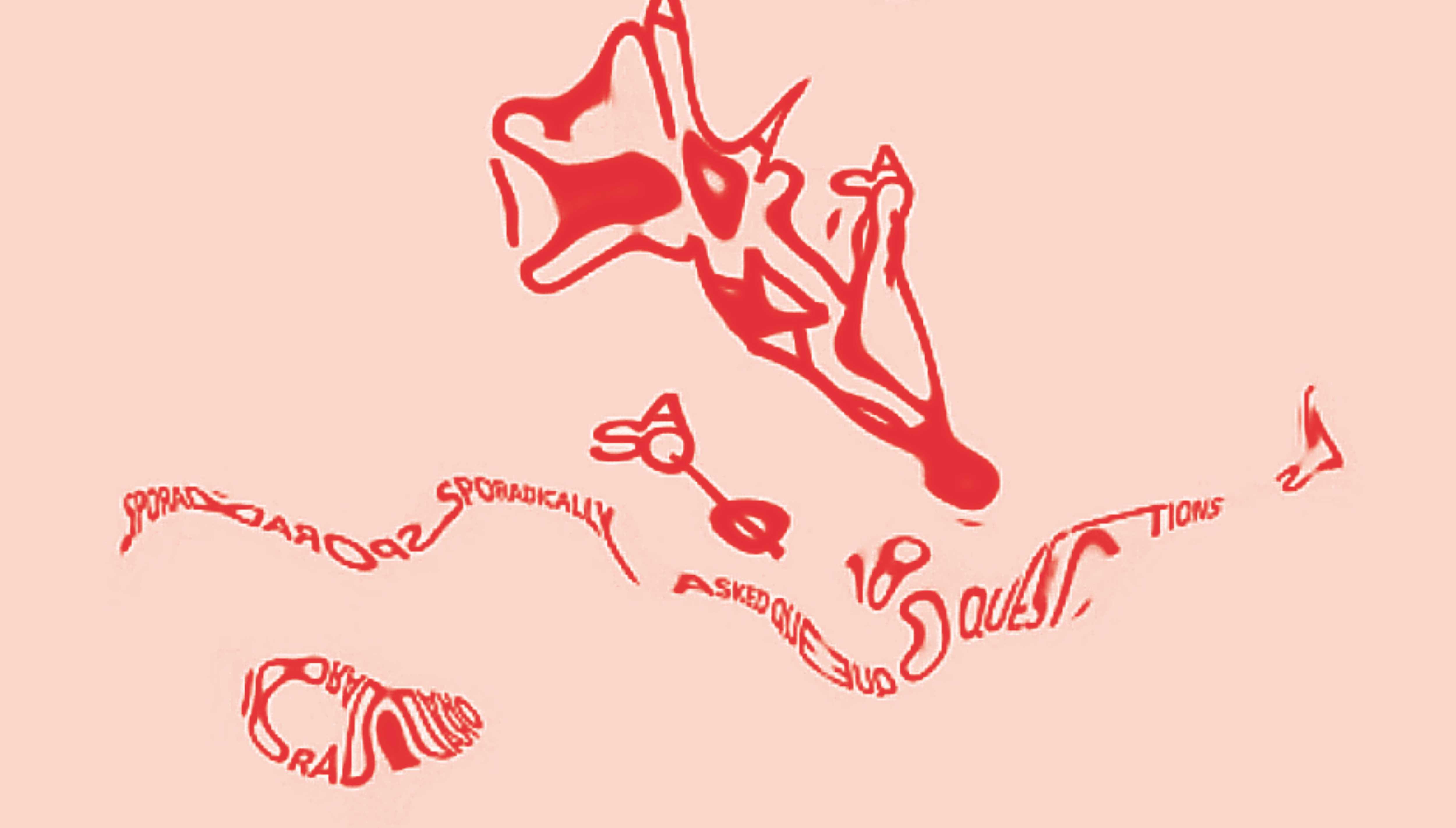Birds I view
[2022](An essay on Aseem Deuskar’s ongoing series of works, seemingly revolving around the theme of ‘Birds’.
Aseem is an artist from Mumbai, currently based in Italy, studying Territorial and Urban planning at Politecnico di Torino, Torino.)
The exercise is that of staining the paper, stroke by stroke. Strokes which are intuitively drawn into and drawn by the swing of the brush, pen or a pencil. Strokes which are sometimes more like lines, stipples, specks, hatches, patches, scribbles or blobs, but always abiding by their strokeness, of being directional marks. The strokes drawn are light and thin, maybe sometimes thick but if so, then often translucent. There appears to be a certain lightness that makes them seemingly delicate, as if floating. But in fact, not only are they neatly settled on the surface of the paper, but ingrained into it, stuck onto it. The strokes vary in thickness or density, as they accumulate in particular areas and sometimes are found scattered, giving hints of depth and texture upon the flat surface of the paper. Sometimes they are aligned together creating a sense of flow and directionality, while sometimes they are crossing each other out creating a turbulence, a roughness in the surface. The strokes, even if apart, they all seem to be held together, as they construct forms, and sometimes even figures.
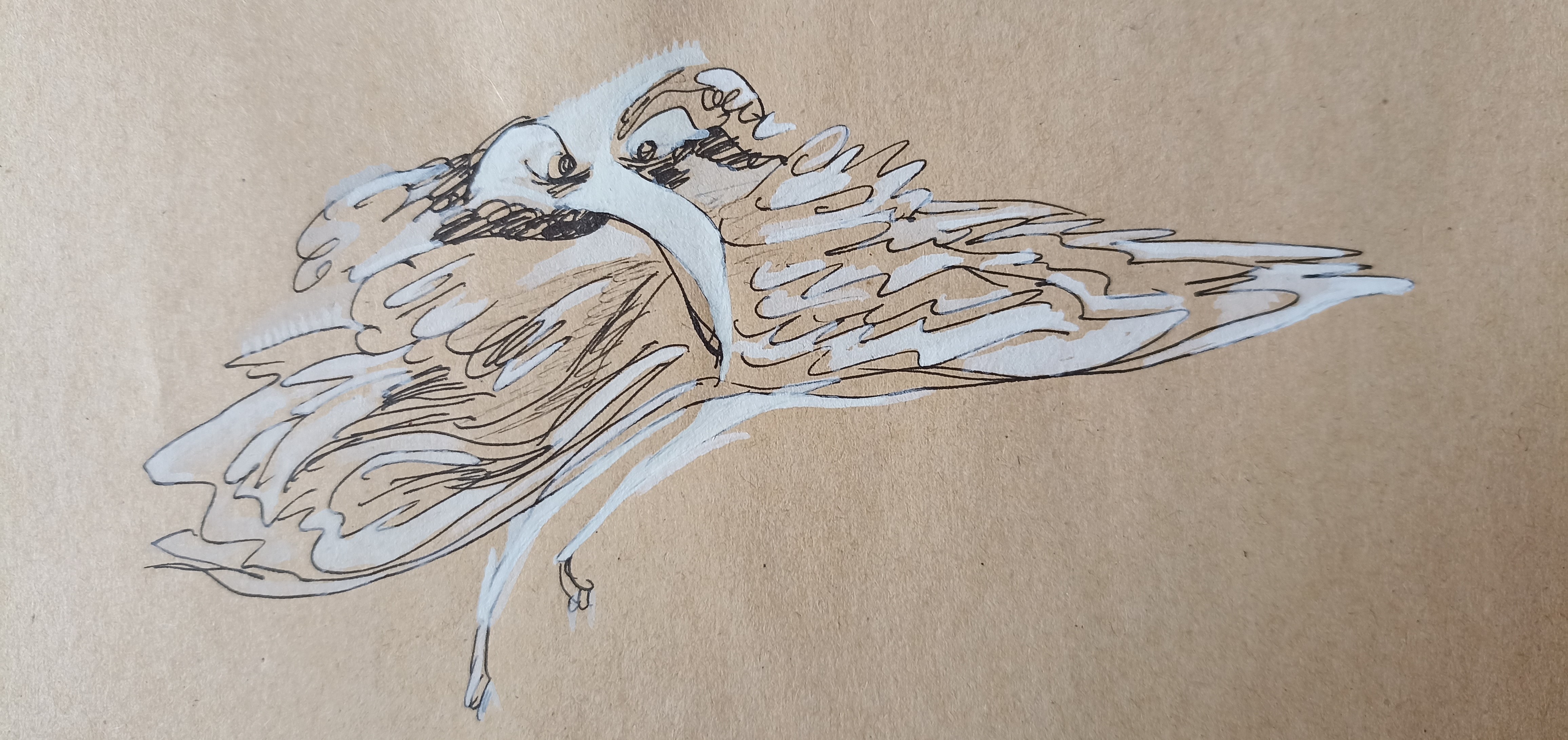
Frequently, the figures that emerge are Birds, of various kinds; in most cases apparent, but sometimes supposed or announced. Strokes stuck upon the paper now become the feathers stuck to the skin of the birds, and drawing each stroke is like adding a new feather to the body of the bird. There are many strokes other than those which serve as feathers; like those which provide the skeleton to the bird’s body, those which provide a definitive outline, and also those which become elements, like the eyes, the beak, or the leg. But since most of the body of the birds is covered entirely with feathers, and these form the outermost layer which is an integral part of the visual appearance, the form or the figure of the bird, the feathers naturally become the primary content for the strokes. Being one of the most complex integumentary systems, feathers serve as an additional protective layer on top of the skin, that aids the birds in flight, thermal insulation, waterproofing, coloration, communication, etc. The ink or the paint in the form of strokes continues to do the same thing on paper, as it serves as this additional layer on top of its surface, assisting not only in the arrival but also in the sustenance, communication and protection of the bird that is drawn. Feathers develop as a well organised cluster, as they arise systematically only from certain well-defined tracts on the skin; and similarly the strokes seem to follow a certain definitive logic, as there is always an underlying structure which provides a sense of order to the arrangement of strokes.
The relationship between the act of stroking and feathers is actually ironic, considering the fact that feathers as Quills, the early versions of pens/brushes used for writing/drawing, have evidently played a major role in history in allowing stroking on a surface and staining it in the first place, upto the fact that the word pen itself is derived from the Latin word ‘penna’, meaning feather. By the fact of it being one of the predecessors, the feather carries forward its virtual presence in the tools such as a brush or a pen employed in the enterprise of stroking. And as the tool systematically draws out collections and clusters of strokes slowly making up the drawing of a bird on the paper, it is as if the artist is attempting to take the feather back to the bird where it came from.

As the strokes accumulate in clusters in varied ways, it’s important to look at their shapes and sizes, lengths, directionality, orientation, flow, density and so on. To confront that which is on the surface, the visible, the formal logic so to say. But apart from that, the birds on the surface are also obliged to dwell in a logic determined by:
Firstly, the Impressions they are derived from, the legible, the figural characteristics, features or the structure of the actual birds outside. Wings, feathers, pointed beaks, thin stick-like legs; all these elements seem to appear in the birds on paper as well. This is the overmining aspect; that which lies in front of the surface, the symbolic layer comprising everything that is signified in a sort of a literal sense by the form, thus maintaining a representational aspect but only as a subset.
Secondly, the Expressions they are derived from, the immanent, comprising the artist and the mode or the process of production employed. Aseem, his hands, fingers, eyes, mind, mood or intentions along with the factors such as technique, skill, action, gesture, grip, etc. are all in action. Including the choice of canvas, medium, method, and so on. This is the undermining aspect, that which lies behind the surface, serving as another subset to the overall determining logic.
So the distinct strokes participating in the structure and production of the drawing, each maintaining their formal individuality, are surely impressionistic, but to capture the impression isn’t their sole task, as the strokes also seem to shout out an expression. It can be said that the expression here is a sort of a surplus or an excess to the impression that carries the drawing - or one can argue the other way around. Accordingly, it can either be the case that the birds have arrived to interfere with the artistic expression or it is the expression of the artist that is trying to find its way by fiddling with the figure of the bird. The relationship between the impressions and the expressions, be it contradictory or complimentary, is encouraged and kept dynamic and operational by the choice of format which appears to be a quick intuitive freehand sketch. A sketchy format which refuses any kind of finality or definitive clarity. One is therefore not obliged to choose either, and can embrace both. As if each stroke is serving as a double edged sword - carrying along both, the impressions and the expressions, scrambled together upto a point where no distinction or separation between them can be made. It is through this dialectic that the form emerges. A form wishing to represent the bird but not as it is, a form seeking a new birdness of the bird, wishing to become a New Bird. There is an evident and pronounced newness as the sketchy stroky format loosens up and transgresses the rigidity of the image of the bird, redefining, expanding, stretching or moulding it, but not going as far as throwing it away and replacing it with something completely new. It refuses pure categories of abstraction or figuration and settles somewhere in the middle. The dialectic is kept operational by employing abstract stroke but at the same time maintaining a certain fidelity and respect for the impressions derived from the figure of the bird, as there is always a beak or a wing or a tail that persistently appears from somewhere. A new conceptual framework is required to make sense of the figure of the New Bird, and its newly found Birdness.
One way to further understand the figure of the New Bird can be by taking into account the grounds on which it stands, or those above which it flies. The new birds do not occupy the volume or the expanse of the blue sky, and aren’t found on trees, lakes and gardens, or pavements, malls, subways or even window sills. Instead they occupy the flat spread of the surface of the paper, as they dwell within the pages of sketchbooks, textbooks, newspapers, tracings, packaging and wrapping papers. The surface here is not to be considered as merely a site for representation that captures and reduces the real to a still fixated dead portrayal. If it does so, it can bereave the bird of the life that it lives, carries, and performs in the actual world. The surface rather than being a mirror to reality, it really is a Cut in the reality. A Cut not in the sense of a dividing separator, but as an incision. An incision through which can flow and blend together that which lies behind and in front of the surface, and materialise in the form of a scar over its topology.



The New Birds on the surface are as alive as the actual ones. Although embedded into the fold of a different sort of ecology - an ecology of ink, graphite, water, paper, pigment, etc; having its own logic at play, that of texture, moisture, viscosity, force, pressure, and so on; their liveliness is animated then in a different sense. The New Birds come to life not by hatching out of some eggs, but by being imprinted in layers of strokes sliced further by layers of thinned watercolour hues that sometimes blend or remain segmented. They nest over gradients of whiteness or the brownness of the paper or neatly settle within the orthographies of grids or the point grids. They arrive in between the texts, in the notes, news or textbooks, and occasionally they are heard chirping when they bring along strokes moulded as texts, their own texts, the songs, quotes, messages or alarms. They rest stacked up on study tables, cramped in the drawers or taped up on the walls or window panes; they are susceptible not to predators or storms, but at mercy to the light exposure, or moisture that can dampen the paper, or water spills that would spread the ink. They feed upon the seeds and worms of thoughts in imagination, the fruits of labour, the tingling ants that run through the hands and fingers holding the pen or the brush. And they reproduce not by mating, but through pictures that are sent across distances and circulate over the network. They proliferate in phones, instagram feeds and google drives.
The actual birds in real life which normally are always outside, in the open, doing their own thing, always at a distance, not constituting much part of our everyday waking life, have their existence or lives usually restricted to the periphery of our (human) grounded social reality. But once these birds become an obsession, and when they assume a trans-formation into strokes and start appearing on the grounds of surfaces and screens around us, on our desks, in our devices and our rooms, one might wonder, what would be the reason for their sudden invasion? Maybe it is not the artist who is interested in the birds and is approaching them through his work, but it is the Birds who have possessed the artist, and are in control, using him as an agent to permeate the grounds of our social reality and intrude our lives, and the only question is Why?
Slavoj Zizek while talking about Alfred Hitchcock's film 'The Birds' explains that the birds are a foreign dimension that, by attacking those on ground, intrudes into and tears apart the seemingly natural setup of the grounded reality. He is here talking about our proper installation into the symbolic order of a social reality which we construct through our lenses and desires. And the birds here are the Real (Real that exists beyond or outside the symbolic reality) that disrupts this construct and reveals the inscribed desire that has twisted the real into an experience of social reality in its first place. An attack from birds is anxiety inducing because it threatens our supposed realities against the unpleasant, conveniently suppressed Real. He goes on to say that the portrayal of this intrusion is not about the fact that something horrible happens in reality; It is infact a reminder that something much worse can happen, which undermines the very fabric of what we experience as reality. And that is why, according to him, all emotions are fundamentally deceiving and the only true emotion is anxiety.
Birds drawn by Aseem, unlike those of Hitchcock’s, are perhaps less cruel and maybe even harmless. They don’t appear violent or aggressive, and upon arrival they are not attacking (immediately as of yet), they are just looking, walking around, and minding their own business, sometimes alone and sometimes in groups, just like they always do. They do look intimidating as if they are judging you with their stares, sometimes scary and creepy, but at times they also look confused, clueless, or awkward or sad, tired and bored, and also at times almost cute and adorable. Their arrival does not feel like so much of an intrusion, definitely not an attack, but an encounter, a slow gentle sliding in. Maybe even a chance encounter, not an intended one. It is ambiguous if they are here to address something, and they do, they surely don’t want to make it obvious and are maybe conscious that their intrusion might be anxiety inducing and thus are being cautious, or even awkward in their approach? Or maybe not.
Probably they are here just to say: 'Hey.. Hi! What are you doing?' What else or more can be read or assumed from them and their poker faces? The fact that they do not have a human-like mouth with facial musculature revealing precise details about their emotional state, and have only a solid beak which in terms of expressive qualities doesn't speak; most of the birds seemingly have somewhat of a poker face, an inscrutable face revealing no signs or hints of communication. Once in a while the beak speaks, but one has to generally rely mostly on the head, the body posture, the way the bird is standing, posing, dancing, lying or flying, or the activity it is engaged in; or maybe the eyes.




The eyes (the look, or the gaze) of all the birds are special, owing to their wings which have bestowed upon them an ability to fly up in the sky, to occupy a position elevated from the ground and to look down at the world from above. Birds eye view, as it is known, is a classic model of having a view of objects (or subjects) from above. It is a removed disinterested position, considered to be relatively objective; A view that opens up an additional dimension for navigation, a vertical dimension, that allows a transcendence from the horizontality of the ground. A view that might be soaked in certain truths, imperceptive to the creatures on the ground. A view that makes possible a sort of a special grasp or hold on space, different from that which is possible by remaining stationed or immersed into the ground. The birds, having had the establishment shot, know the scheme of things, they know something more. No wonder the symbolisation of freedom that is so commonly associated with the birds or the act of flight.
To be free as a bird, can humans aspire; but it’s one thing to actually be free and another to confront that or those which are free as they stand in front of you. Their freedom can remind you of your own unfreedom, and thus it can be intimidating. But that is not exactly what is happening here. As the new Birds stand near and still, adjourning their flight, in one position, fixated on the paper, a tension is felt, but also their supposed inaction assures that there is nothing to worry about. Infact, a sort of intimacy is injected, a closeness is felt, as if they are standing here in order to allow direct observation, as if they are allowing their drawing onto the paper. Suspending for a moment the fact that the birds might be drawn from imagination (relying heavily on artistic expression and not so much the impression or observation), drawings of standing birds eliminate the consideration of mediums like photography which allow drawing birds caught in the act of flying and the heavy lenses that allow zooming and spotting them from afar, or other such instances which involve movement, great distance, etc. They are brought closer to the paper and to the artist, by the artist, by the act of stroking. Stroking here as a verb can also be understood as the act of caressing, of repeatedly moving hand with a brush/pen/pencil, applying gentle pressure over a surface, thus allowing emergence of possibility of apparition of the birds. So alternatively one can also say that it is the bird who is cunningly lured by the artist by stroking and is trapped inside the paper, where the paper is its new world, or its new cage. The strokes scattered on the paper can be like the seeds or grains thrown on the ground, and figures of birds automatically arrive / emerge to feed upon them. The stains of ink hold the bird down to the paper by momentarily adjourning its flight. The sketchbook then becomes an aviary.
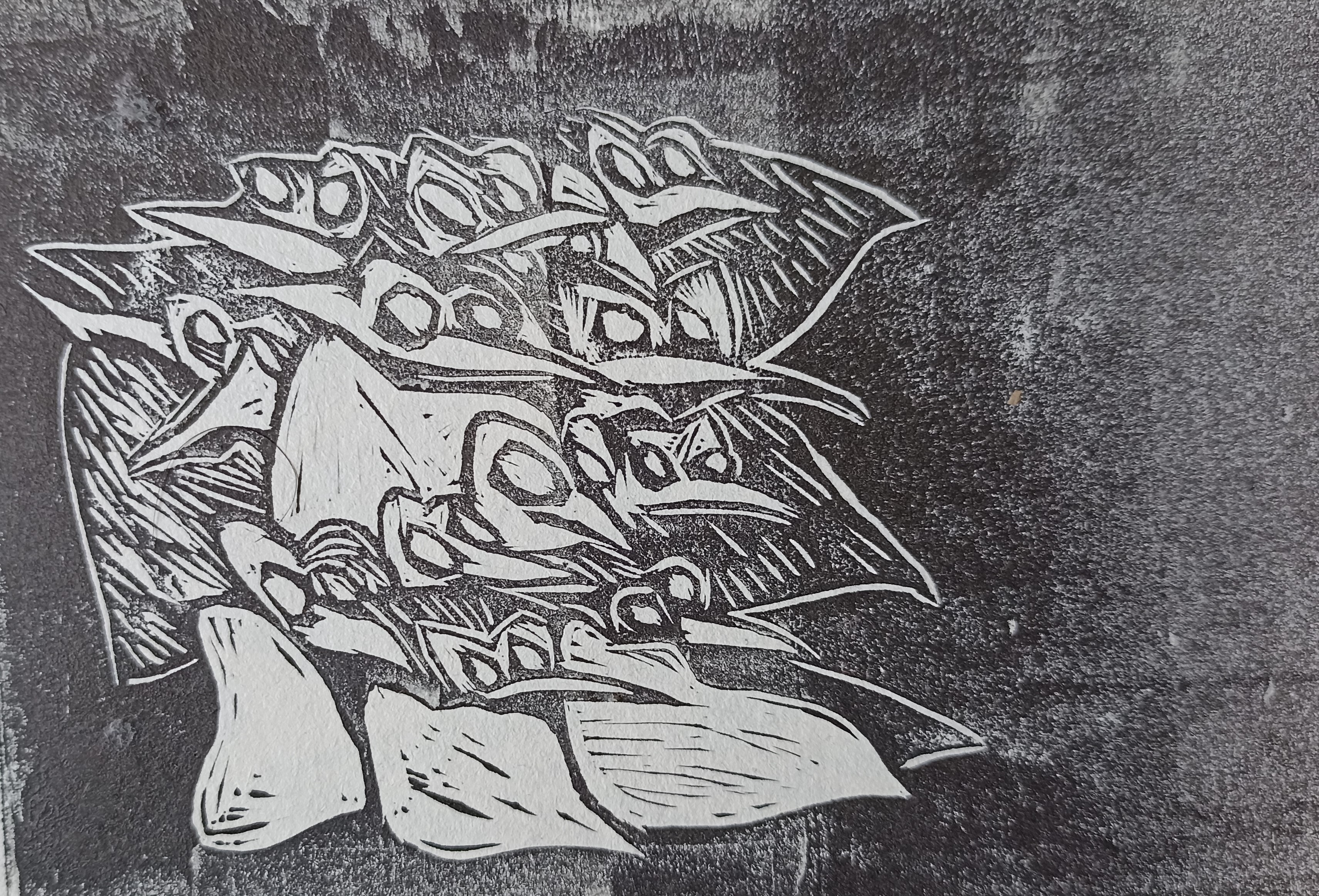


It is possible also looking closely at the standing birds and their nonchalant attitude, they seem to not mind being captured, as if being voluntary prisoners of the artist, willingly here for the moment, as discussed earlier, they seem to be allowing their entrapment. Maybe because they are well aware of the artist’s (and the observer’s) unfreedom, of them themselves being trapped in a sort of a prison, on the ground. The Birds maybe arent strangers or enemies but comrades of the artist and the observer, and are voluntarily entering this prison, the enemy territory, for a reconnaissance, which would be followed by a rescue mission. Maybe they are here not to attack or threaten us, but to rescue and liberate. They are carefully surveying, with their strokes, the surface and its nature. They are scrutinising the grounds that they arrive on, taking notes of activities and forces in action, mapping vectors of capture and lines of flight. They seem to be the messengers, as they bring along with them messages and voices from beyond. They bring communist greetings and salutations, stalinist commandments and quote poems of Pessoa. They ask the meaning of the news articles, the advertisements and all other kinds of propagandas floating around, they squat over the indexes and chapters from textbooks and talk about public space, geography, free market, economics, nation states, etc. They point out fascists and talk about killing machines. Maybe when they say ‘Hey.. What are you doing?’, it's not a casual greeting, but an urgent inquiry, maybe even an existential question, a call for action. And although existential, they wish to treat it casually. Not by the way of suddenly inducing anxiety, instead by sensitively and steadily taking steps closer and closer. They wish to investigate our state of being captured not only in socio-economic and political structures but also our entrapment in geometry. They talk about lines and dots and strokes and patterns, how they all come together and stagger over each other. They talk about how marks are made, how inscription or imprinting works, how forms and figures not only emerge, but also carry and transfer meanings and values, facilitating the discourses that we are soaked in. The birds actively engage and participate in this Circus. They gather and stand together like Kathe Kollwitz’s Mothers standing in a union, they float like Francisco Goya’s Monsters which emerge in the sleep of reason, and parade around the pages like the horses of William Kentridge. The Birds set up a theatre on the surfaces around us, like the cave paintings, as they aren’t merely art for the sake of it, but are more like illustrative instructional pieces for gathering, organising, agitating, attacking, protesting, liberating, and so on, but for the modern caves that we live in today.
The theatre of new birds is intended to activate a movement, to produce an effect; to provoke action, but one must not think of it as a blockbuster movie that is supposed to be watched and consumed passively in a dark cinema hall. It is participatory improvisational theatre set up in the arena of our everyday lives, out in the open, where we ourselves are actors as well. The birds aren’t the singular glorious heroes here to rescue us poor helpless subjects. One must also not idealise them and also debunk the initial myth of the romantic symbolism of freedom associated with birds. The Birds that arrive remind us that it is not as simple as: Flying being entirely about freedom and being grounded means to be in a prison. They are not that different, the ways of the ground, from the winds in the sky they say. The Birds too are as miserable as us, as confused and sometimes naive. An effort must be made to look at them closely, to understand them as they try to understand us, to read their cues, their messages which can sometimes be more like mumbles, and could be as inscrutable and illegible as their poker faces. To realise that the Birds are here as they empathise with our situation and conditions, out of solidarity. They are not here to sell us their skies or to teach us to fly, but they bring their unique view, the birds eye view, a new perspective, to help us reclaim our grounds, and maybe they want us to help them reclaim their sky.

The choice of muddy shades of yellows and browns along with the contrasting cloudy layers of Blues, hint at the dialectical play between the ground and the sky. Once in a while they merge and also produce greens, shedding light on the hope that lies on the other side. But amidst this folding or weaving of skies and grounds, the main element in action that allows this dissolution here, is water; evident through the use of excessively diluted watercolours. Apart from the blacks and greys carried by the graphite and ink constituting desaturated figures, whenever any colours start to appear, it’s mainly through the choice of watercolours, applied both as definitive strokes and expansive patches carrying hues in very carefully restrained amounts. The excessive water breaks down the pigments allowing them to blend, but not entirely as their distinct definitiveness is still kept intact. The clearly visible layering of each pigment suggests that the blending happens over the surface and never in the palette, and thus the grounds and the skies do blend but also remain separate, like over the horizon.
The line of such a horizon is where the event takes place; a horizon where the ground and the sky, the yellows and the blues, the artist and the bird, the impression and the expression, that which is in front and that which is behind the surface, the reflections on the state of being captured and the promising possibilities of a flight, they all come together revealing their dialectical relationship. The dialectic is activated, set into motion and dragged towards a synthesis by what remains the most crucial element at work here, the act of viewing, the act of Gaze; Gaze which serves an activator, a facilitator, as it produces an observer effect, disturbing everything that it penetrates; the Gaze of the eye, not just the eye of the bird, but also the eye of the artist and the eye of the observer, all at once coming together and constituting a new eye, a new ‘I’, a new subject, that stands confronting the New Bird.




